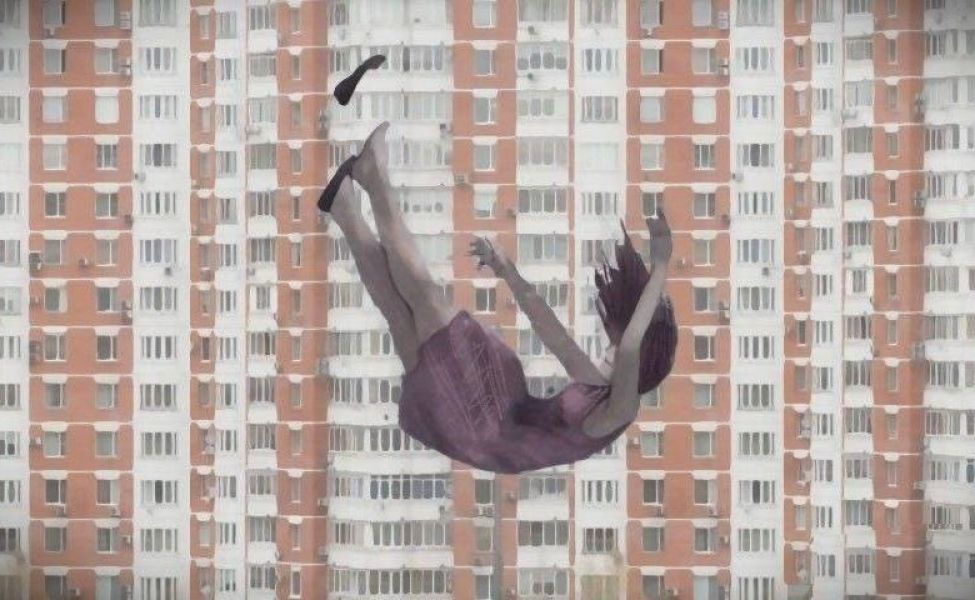
Unfortunately, youth suicide in Kazakhstan is not a rare phenomenon
A wave of suicides among teenagers and young adults has swept across Kazakhstan. Parents and the Children’s Ombudsman have said children were provoked to do dangerous things by the internet, and deputies have demanded that social networks should be blocked. The media, meanwhile, has been accused of creating a “Werther effect,” fixating on the rash of suicides and thus encouraging teenagers to repeat these acts of self-harm. However, experts believe the cause is much more nuanced and cannot be eliminated by blocking harmful content alone.
Chronicle of a Fateful September
On September 13, a teenager fell from an eighth-story window in Astana. The boy died of his injuries. The very next day, a schoolgirl plummeted from a fifth-floor window in Shchuchinsk. The 12-year-old girl is in hospital, and the causes of both incidents are still under investigation.
On September 16 in Almaty, two seventh-grade students from school No. 25 named after the writer I.Esenberlin, left class and climbed to the attic of a neighbor’s apartment complex. The girls both fell to their death from the roof. “I came, and I saw two girls lying there. They had jumped from the roof,” an eyewitness stated. “The girls were about 13 years old; seventh graders. One had a backpack next to her, and the other had no shoes and was wearing black tights. She had taken her shoes off and placed them neatly. One fell on a car, and her body rolled away. The second was immediately killed on the asphalt.”
Later, it became known that one of the girls was the daughter of a famous Almaty ecologist and artist. Deputy Interior Minister Igor LEPEKHA said that what happened “is a suicide; the case was opened based on it being suicide.”
On September 21, another schoolgirl fell from a high-rise in Almaty. Allegedly, the girl left the house to perform a routine task, but climbed to the 13th floor, from where she plunged. The Almaty Police Department confirmed the girl’s death and has opened a criminal case.
By this time, in schools, online, and on social networks, parents had started to spread panicked rumors about the impact on children of a particular computer game, similar to the semi-mythical game “Blue Whale.” In the past, Blue Whale has been decried as a malicious game which encourages teenagers to commit suicide and acts of violence, but no convincing evidence has ever been presented. The Almaty police stated that gossip regarding the involvement of dangerous internet games in the girls’ deaths is not valid and reminded the public about their responsibility vis-à-vis spreading false information.
On September 22, in the yard of a multi-story residential building in Almaty, the body of a 3rd-year cadet from the Border Academy of the National Security Committee (NSC) who was on regular leave was found. “The cause of death was a fall from a height,” the NSC press service reported.
On September 23, also in Almaty, multiple sources reported that a young man had tumbled from a high-rise building. Police confirmed this information and the young man’s death.
The seventh tragic case in the largest city in Kazakhstan was the death of a student at the prestigious Almaty Management University (AlmaU) on September 25. The student’s body was found on a sports field near a high-rise. The student was in his 20s, was studying to be a director, and was the son of a prominent official. The cause of his death is also believed to be suicide; however, there is no official statement as of yet.
Search for the Guilty
Given that this September has been filled with unexplained tragic incidents, the level of anxiety in Kazakhstan, especially in Almaty, has risen sharply. The media has been chock-full of stories about how a game called “Red Dolphin” has allegedly affected children in the same way it was said Blue Whale did. Photographs of books reportedly found among the belongings of the girls involved in the September 16 suicide were also shared, with unfounded rumors indicative of the widespread panic claiming these books were only available in marketplaces and were not sold in stores; it later transpired that the teen fantasy books were widely available.
The Ministry of Internal Affairs announced it was checking the schoolgirls’ phones. “Participation in suicidal game is not established. The Ministry of Internal Affairs (MIA) constantly monitors networks to identify and respond to illegal content. Since the beginning of the year, about 22,000 illegal foreign internet resources have been identified. Information has been sent to the authorized body to block access to them. The participation of Kazakhstani citizens in internet games with a suicidal orientation has not been established,” the Interior Ministry stated.
The Almaty Education Department also announced the formation of a commission to investigate all aspects of the case, involving representatives from relevant government agencies. Additionally, many schools across the city have held meetings with parents focused on suicide prevention.
Children’s Ombudsman Dinara ZAKIEVA published a memo on her social networks, which is being distributed among teachers and parents. The memo mentions Red Dolphin and dozens of other internet resources that, according to some sources, push children to suicide. It also mentions the teen fantasy books allegedly found in possession of the dead girls.
According to the Interior Ministry, the average age among children who take their own life in Kazakhstan is 15-17 years old. The Ombudsman notes, however, that cases are increasingly common among the age group 11-13. “The main reasons are loneliness, relationships with parents, relatives, peers, and bullying. In addition, social networks significantly impact the modern world,” Zakieva wrote. The Ombudsman also stated that a pilot implementation of the KIVA anti-bullying program has begun in 110 schools, and will be introduced in all schools next year. From January, all schools should have one psychologist per 500 children. Currently, there is one per 1,500.
Editorial staff at Factcheck.kz analyzed the pertinent internet materials and books, finding they “do not contain any calls for dangerous actions or information promoting suicide, but some of them are intended for the age category 16+. Red Dolphin and other groups associated with the RNBWN online community do contain information normalizing homicide and suicide. However, the actual effect of these resources is not entirely clear as of now. History shows that the impact of death groups tends to be greatly exaggerated,” the study concluded.
Several psychologists, meanwhile, have spoken to the media pointing to the “Werther effect,” where the publication of news about suicides increases the risk of copycat actions. The psychologists’ recommendations included increasing control over a child’s phone use, and advising parents to build more trusting relationships with their children.
Without waiting for the results of the investigation, meanwhile, Mazhilis deputy Zhuldyz SULEIMENOVA has called on the authorities to block social networks and messengers across the country.
Fictitious and Real Threats
Unfortunately, youth suicide in Kazakhstan is not a rare phenomenon. At the same time, computer games, books, and social networks do not, in principle, play a significant role in these tragedies.
In this climate of misinformation, in May of this year a schoolgirl threw herself from a multi-story building in Taldykorgan and died. According to some reports, the girl was driven to take such a step after receiving unsatisfactory results in the Unified National Test (UNT), which determines the possibility of receiving a grant to study at university. However, the school said the girl was yet to sit the UNT at the time of her death.
In August, two sisters were hospitalized in Shymkent after trying to end their lives. They told police they had decided to commit suicide because they were being blackmailed over an intimate video they were filmed participating in. A criminal case was opened under the article “Driving to suicide.”
Overall, according to the General Prosecutor’s Office, 2,389 cases of suicide were registered in Kazakhstan in the first eight months of 2024, including 128 cases among children between the ages of 5 and 18.
According to information for 2023, the number of suicides among minors in Kazakhstan increased by 48% – from 94 to 139, and the number of attempted suicides from 210 to 233 cases. In this regard, a Comprehensive Plan for 2023-2025 to protect children from violence and prevent suicide was adopted. The Comprehensive Plan envisages the development of anti-bullying programs based on foreign experience and several other measures that include rapid responses to incidents of violence.
In February of this year, Aigul KADIROVA, coordinator of the adolescent and youth development program of the United Nations Children’s Fund (UNICEF) in Kazakhstan, outlined the leading causes of mortality among children and youth.
Kadirova said that according to the Bureau of National Statistics, the leading causes of death among young people aged 10 to 34 includes accidents, poisoning, injuries, transportation accidents, and suicide. She noted that the study shows that traffic accidents and self-harm are the leading causes of death among young people. “This conclusion applies to all age groups of adolescents. Starting from the age group of 15-19 years, self-harm, which includes suicide, comes in first place,” said Kadirova.
In 2023, a statement by Professor Muslim HASENOV, a PhD in law and associate professor at the Narikbayev KazSLU, argued that according to his data, about 170 children end their lives by suicide every year in Kazakhstan. There is a “very high latency, very unclear reasons in many cases. I analyzed all the statistics for eight years and came to shocking conclusions. Every year in Kazakhstan, an average of 172 children commit suicide, and the number of suicide attempts among minors reaches 350 cases a year,” wrote Hasenov. But, he noted, only about 40 cases a year are registered under the article, Driving to suicide.
“We should not simplistically perceive suicide as a voluntary departure from life, especially if it concerns a child, because this is a very cynical and dangerous approach,” Hasenov stated. “We must realize that any suicide, especially child suicide, has reasons when a person, especially a child, is driven to despair, and, in addition to internal psychological factors, there are external ones. And the science of criminal law has already formed the concept of ‘criminal suicide’ [where] a suicide is caused by an external negative impact of a physical, mental, or informational nature.”
According to statistics, 40% of all child suicides in Kazakhstan are committed for unspecified reasons, leading Hasenov to argue it is impossible to establish the reasons behind such actions if this remains the case. “If there is no investigation or collection of evidence, it is practically impossible to establish guilt and bring the guilty to justice. There are also facts when relatives of persons who committed suicide, for some reason, do not apply or refuse to initiate proceedings due to fear, bribery, or simply unwillingness due to the tragic circumstances,” said Hasenov in calling for a full investigate into all the facts in cases of children’s suicides.
President Kassym-Jomart TOKAYEV has also expressed his opinion on the situation, stating that violence provokes children to commit suicide. “Unfortunately, cases of abuse and even violence among students do not stop, which, in turn, provokes children into suicide. Bullying causes irreparable damage to the mental state and health of children and adolescents, hurts the learning process, and leads to exclusion from the social environment and mental disorders. The State must ensure the protection of the rights and safety of children. It is necessary to eradicate bullying forever,” the president said last year, adding that he constantly receives letters from desperate parents.
Tokayev instructed his administration to take control of the situation regarding the safety of children in schools. “The Prosecutor General’s Office should finally fulfill the duties assigned to them as far as the safety of children is concerned. The Ombudsman for Children’s Rights should record all such cases and report to me. We will take the toughest measures,” said Tokayev.
Immediately after the wave of suicides, on September 30, Children’s Rights Ombudsman Zakieva published a report on her trip to the Turkestan Oblast; the report clearly identifies the leading causes of children’s suicidal behavior.
Located in the country’s south, Turkestan Oblast is Kazakhstan’s most populated and “multi-child” region. It is also heavily influenced by religion and patriarchal traditions, including the subordinate, dependent position of women and children.
“In a rural school in the Saryagash district, children complained of bullying and extortion in questionnaires and surveys. In the same school, a boy committed suicide in the spring; at the same time, a 15-year-old girl was found to be pregnant after being raped. It transpired that these students had earlier signaled in their drawings, which psychologists had collected, that they felt bad. However, no one paid attention,” Zakieva said.
At a school in the Tole Bi district, four children from the same class wrote that they had been beaten, including with a stick, and were being mistreated at home. However, as the Ombudsman noted, psychologists and school administrators failed to report this to the authorized bodies, and the necessary actions were not taken. “A girl made a suicide attempt at school in the Sairam district, but no further work including the involvement of health services and psychiatrists was done,” Zakieva wrote. Several other similar cases are cited in the report.
No matter how attractive the idea of declaring social networks, books, or computer games the cause of suicides may be, the facts do not bear out this theory. On the contrary, there is evidence that Kazakhstan’s children decide to kill themselves because of violence, adult indifference, and disenfranchisement.
According to the World Health Organization, more than 720,000 people commit suicide each year. Suicide is the third leading cause of death for people aged 15 to 29. Globally, 73% of suicides occur in low- and middle-income countries.
There are helplines for people who find themselves in a difficult life situation in Kazakhstan. Kazakhstanis of any age can call this number with their problems and worries – the operators will not refuse them in counseling. The call is anonymous. The contact center is open 24 hours a day, seven days a week.
National helpline for children and youth at 150 or 1303.
You can also write to WhatsApp at +7 708 106 08 10.
Source: The Times Of Central Asia.
Image: TCA, Aleksandr Potolitsyn.
YOU CAN SHARE YOUR OPINION AND DISCUSS THE ARTICLE ON OUR TELEGRAM CHANNEL!












